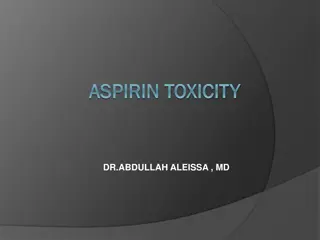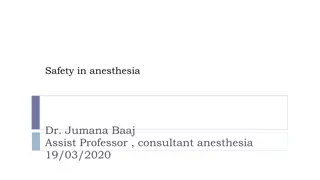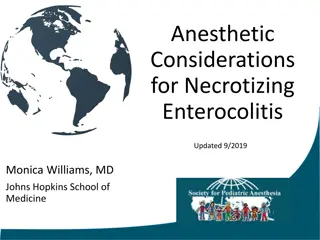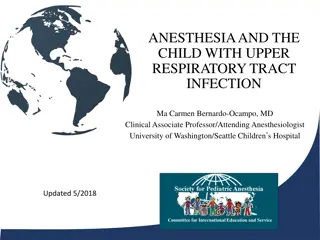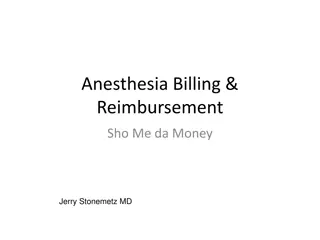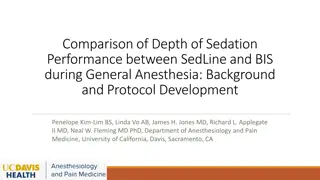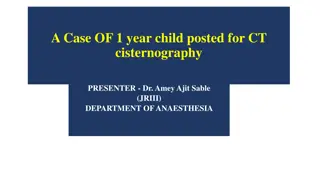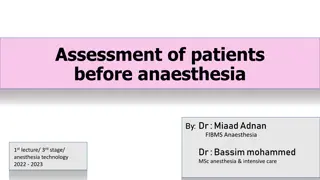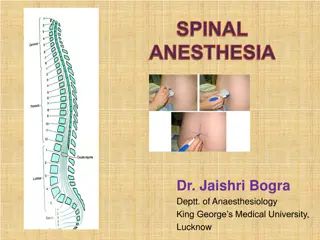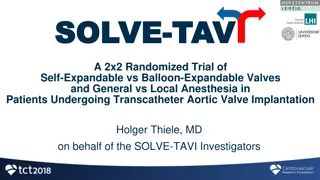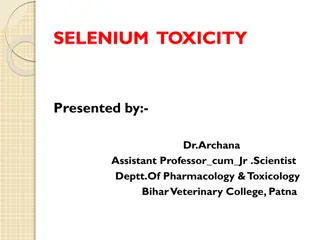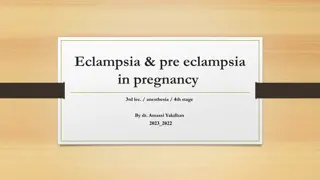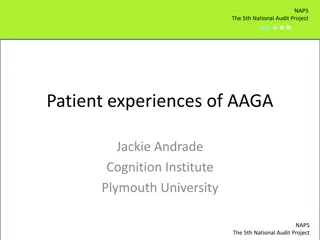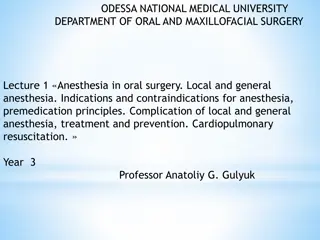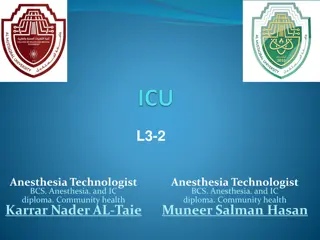Understanding Local Anesthetic Systemic Toxicity in Anesthesia Practice
Local anesthetics are crucial in anesthesia for their ability to prevent nerve depolarization, but systemic toxicity can lead to serious complications. Last Causes, signs, and max dosage discussion along with the importance of recognizing early signs like lightheadedness, tinnitus, and late symptoms like seizures are highlighted to ensure prompt management and patient safety.
Download Presentation

Please find below an Image/Link to download the presentation.
The content on the website is provided AS IS for your information and personal use only. It may not be sold, licensed, or shared on other websites without obtaining consent from the author. Download presentation by click this link. If you encounter any issues during the download, it is possible that the publisher has removed the file from their server.
E N D
Presentation Transcript
Local Anesthetic Systemic Toxicity Thomas Baribeault DNP CRNA @BaribeaultOFA
Introduction Anesthesia is the art of the giving just the right amount of poison so that the patient survives being close enough to dead that they didn t notice getting cut open.
Local Anesthetics Local anesthetics (LA) bind to intracellular portion of the Na channel preventing nerve depolarization Lack many of the side effects of typical anesthetic agents Respiratory depression PONV Immune suppression Cardiac and Neurologic depressants
Complications LAST Cardiac and neurologic Allergic or anaphylaxis Esters Methemoglobinemia Prilocaine, Benzocaine Neural, muscle, or tissue toxicity
LAST Causes Excessive dose Accidental vascular injection Rapid Absorption Factors that affect free plasma concentration Decreased protein level Acidosis Liver or kidney failure Ability of body to deal with LA Heart failure
LAST Causes Rapid Absorption IV Tracheal Intercostal Caudal Paravertebral Epidural Brachial plexus Spinal Sciatic/Femoral
LAST Causes LA toxicity Lidocaine Mepivacaine Ropivacaine Bupivacaine
LAST Causes LA max dose Lidocaine 5 mg/kg 1.6 mg/kg/hr Mepivacaine 5 mg/kg Ropivacaine 3 mg/kg 0.4 mg/kg/hr Bupivacaine 3 mg/kg 0.4 mg/kg/hr
LAST Signs 40% of reported cases present atypically Neurologic Generally appear before cardiac Exception bupivacaine Pre-medication can mask signs LA blocks inhibitory pathways in cerebral cortex leading to unopposed excitatory changes
LAST Signs Neurologic Early Lightheaded/dizzy Tinnitus Metallic taste/circumoral numbness Middle Shivering/tremors Myoclonus/tonic clonic convulsions Disorientation Late Seizures
LAST Signs Cardiac Low plasma concentration of LA Increased CO, BP, HR High plasma concentrations of LA Vasodilation Decreased contractility Dysrhythmia prolonged PR, heart block, sinus arrest Widened QRS leading to v-fib
LAST & Acidosis Hypercarbia/acidosis increases LAST effects Increased cerebral blood flow Increased LA to brain Decreased protein binding Increased free plasma concentration Intracellular acidosis Ion trapping causes LA to stay intracellular in tissue
LAST Prevention Least toxic drug, lowest dose, least risky block Slow incremental injection/aspirate 3-5 ml Monitor ekg, pulse ox, bp minimum 30 minutes post block Decrease dose for elderly and those with cardiac, hepatic, or renal dysfunction
LAST Prevention Test dose??? Fentanyl 100 mcg Drowsiness Epinephrine 10-15 mcg Hr increase 10 bpm or bp increase 15 mmhg Unreliable in elderly, sedated, on BB USGRA Visualize your needle tip!!!
LAST Treatment RECOGNITION Get Help Control Airway/hyperventilate Seizures Benzodiazepine Use propofol with caution
LAST Treatment ACLS - modified Epinephrine 1 mcg/kg No Vasopressin Amiodarone Not lidocaine Avoid Beta blockers Calcium channel blockers
LAST Treatment 20% lipid emulsion 1.5 ml/kg bolus Can be repeated 1-2x 0.25 ml/kg/min for 30-60 minutes Can be doubled if ROSC but bp low
LAST Treatment 20% lipid emulsion Lipid sink Large intravascular lipid volume binds and inactivates LA Lipid Flux Local anesthetics inhibit cardiac metabolism of lipids





